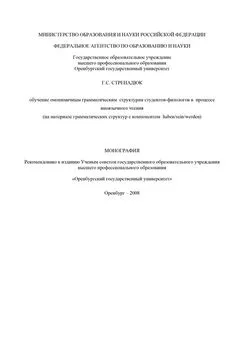Нэнси Мак-Вильямс - Психоаналитическая диагностика: Понимание структуры личности в клиническом процессе
- Название:Психоаналитическая диагностика: Понимание структуры личности в клиническом процессе
- Автор:
- Жанр:
- Издательство:Независимая фирма “Класс”
- Год:2001
- Город:Москва
- ISBN:ISBN 5-86375-096-0 (РФ)
- Рейтинг:
- Избранное:Добавить в избранное
-
Отзывы:
-
Ваша оценка:
Нэнси Мак-Вильямс - Психоаналитическая диагностика: Понимание структуры личности в клиническом процессе краткое содержание
Нэнси Мак-Вильямс
ПСИХОАНАЛИТИЧЕСКАЯ
ДИАГНОСТИКА
Понимание структуры личности
в клиническом процессе
Nancy McWilliams
PSYHOANALYTIC DIAGNOSIS
Understanding Personaly Structure in the Clinical Process
Эта книга замечательна во многих отношениях. Написанная блестящим профессионалом высочайшего уровня, она уже вошла в золотой фонд аналитической классики и стала бестселлером в тех странах, где была издана. В России она выходит спустя всего четыре года после первой публикации.
Это один из самых современных базовых учебников по психоаналитической диагностике личности, написанный прекрасным языком и содержащий стройное синтезированное изложение существующих психоаналитических подходов к структуре личности и конкретные практические рекомендации по проведению психоаналитической терапии с разными типами пациентов.
Книга, несомненно, будет интересна и полезна психотерапевтам, психиатрам, психологам-консультантам, студентам, педагогам и всем, кто интересуется глубинной психологией.
Рекомендовано курсом психотерапии и клинической психологии факультета последипломного профессионального образования ММА им. Сеченова в качестве учебного пособия по специальности “Психотерапия и медицинская психология”
Психоаналитическая диагностика: Понимание структуры личности в клиническом процессе - читать онлайн бесплатно ознакомительный отрывок
Интервал:
Закладка:
Cooper, A.M. (1988). The narcissistic – masochistic character. In R.A. Glick &. D.I. Meyers (Eds.), Masochism: Current psychoanalytic perspecrives (pp. 189—204). Hillsdale, NJ: The Analytic Press.
Darley, J., R Batson, C.D. (1973). From Jerusalem to Jericho: A study of situational and dispositional variables in helping behavior. Journal of Personality and Social Psychology, 27, 100—108.
Davanloo, H. (1978). Basic principles and techniques in short-term dynamic psychotherapy. New York: Spectrum.
Davanloo, H, (1980). Short-term dynamic psychotherapy. New York: Jason Aronson. de Monchy, R. (1950). Masochism as a pathological and as a normal phenomenon in the human mind. International Journal of Psycho-Analysis, 31, 95—97.
Deri, S. (1968). Interpretation and language. In E. Hammer (Ed.), The use of interpretation in treatment. New York: Grune & Stratton.
Des Barres, P. (1987). I’m with the band: Confessions of a groupie. New York: Morrow.
Deutsch, H. (1942). Some forms of emotional disturbance and their relationship to schizophrenia. Psychoanalytic Quarterly, 11, 301—321.
Deutsch, H. (1944). The psychology of women: A psychoanalytic interpretation: Vol. 1. Girlhood. New York: Grune R Stratton.
Deutsch, H. (1955). The impostor: Contribution to ego psychology of a type of psychopath. Psychoanalytic Quarterly, 24, 483—503.
Diamond, M.J. (1993, April). Fathers and sons: Psychoanalytic perspectives on “good-enough” fathering throughout the life cycle. Paper presented ar. the Spring Meeting of the Division of Psychoanalysis (39) of the American Psychological Association, New York.
Dinnerstein, D. (1976). The mermaid and the minotaur. New York: Harper & Row.
Dorpat, T. (1982). An object-relations perspective on masochism. In P.L. Giovacchini & L.B. Boyer (Eds.), Technical factors in the treatment of severely disturbed patients (pp. 490—513). New York: Jason Aronson.
Easser, B.R., & Lesser, S. (1965). The hysterical personality: A reevaluation. Psychoanalytic Quarterly, 34, 390—405.
Edelstein, M.G. (1981). Trauma, tmnce, and transformation: A clinical guide to hypnotherapy. New York: Brunner/Mazel.
Ehrenberg, D.B. (1992). The intimate edge: Extending the reach of psychoanalytic interaction. New York: Norton.
Eigen, M. (1986). The psychotic core. New York: Jason Aronson.
Eissler, K.R. (1953). The effects of the structure of the ego on psychoanalytic technique. Journal of the American Psychoanalyric Association, 1, 104—143.
Ekstein, R., & Wallerstein, R.S. (1958; rev. ed., 1971). The teaching and learning of psychotherapy. Madison, CT: International Universities Press.
Ellis, A. (1961). The treatment of a psychopath with rational emotive psychotherapy. In Reason and emorion in psychotherapy (pp. 288—299). New York: Lyle Stewart.
Erikson, E.H. (1950). Childhood and society. New York: Norton.
Erikson, E.H. (1968), identity: Youth and crisis. New York: Norton.
Escalona, S.K. (1968). The roots of individuality: Normal patterns of development in infancy. Chicago: Aldine.
Fairbaim, W.R.D. (1941). A revised psychopathology of the psychoses and psychoneuroses. International Journal of Psycho-Analysis, 22, 250—279.
Fairbaim, W.R.D. (1954). An object-relations theory of the personality. New York: Basic Books.
Fast, I. (1990). Aspects of early gender development: Toward a reformulation. Psychoanalytic Psychology, 7 (Suppl.), 105—107.
Fedem, P. (1952). Ego psychology and the psychoses. New York: Basic Books.
Fenichel, O. (1928). On “isolation.” In The collected papers of Otto Fenichel, first series (pp. 147—152). New York: Norton.
Fenichel, O. (1941). Problems of psychoanalytic technique. Albany, NY: Psychoanalytic Quarterly.
Fenichel, O. (1945). The psychoanalytic theory of neurosis. New York: Norton.
Ferenczi, S. (1913). Stages in the development of a sense of reality. In First contributions to psycho-analysis (pp. 213—239). New York: Brunner/Mazel, 1980.
Ferenczi, S. (1925). Psychoanalysis of sexual habits. Further contributions to the theory and technique of psycho-analysis (pp. 259—297). New York: Brunner/ Mazel, 1980.
Finell, J. (1986). The merits and problems with the concept of projective identification. Psychoanalytic Review, 73, 103—120.
Fisher, S. (1970). Body experience in fantasy and behavior. New York: Appleton-Century-Crofts.
Fisher, S., & Greenberg, R.P. (1985). The scientific credibility of Fremi’s theories and therapy. New York: Columbia University Press.
Fogelman, E. (1988). Intergenerational group therapy: Child survivors of the Holocaust and offspring of survivors. Psychoanalyric Review, 75, 619—640.
Fogelman, E., & Savran, B. (1979). Therapeutic groups for children of Holocaust survivors. International Journal of Group Psychotherapy, 29, 211—235.
Fonda, H. (1981). My life. As told to Howard Teichmann. New York: New American Library.
Forster, E.M. (1921). Howard’s End. New York: Vintage.
Fraiberg, S. (1959). The magic years: Understanding and handling the problems of early chiMhood. New York: Charles Scribner’s Sons.
Frances, A., & Cooper, A.M. (1981). Descriptive and dynamic psychiatry: A perspective on DSM-III. American Journal of Psychiatry, 138, 1198—1202.
Frank, J.D., Margolin, J., Nash, H.T., Stone, A.R., Varon, E., R Ascher, E. (1952). Two behavior patterns in therapeutic groups and their apparent motivation. Human Relations, 5, 289—317.
Freud, A. (1936). The ego and the mechanisms of defense. New York: International Universities Press, 1966.
Freud, S. (1886). Observation of a severe case of hemianaesthesia in a hysterical male. Standard Edition, 1, 23—31.
Freud, S. (1897). Letter to Wilhelm Fliess. Standard Edition, 1, 259.
Freud, S. (1900). The interpretation of dreams. Standard Edition, 4.
Freud, S. (1901). The psychopathology of everyday life. Standard Edition, 6.
Freud, S. (1905). Three essays on the theory of sexuality. Standard Edition, 7, 135—243.
Freud, S. (1908). Character and anal eroticism. Standard Edition, 9, 169—175.
Freud, S. (1909). Notes upon a case of obsessional neurosis. Standard Edition, 10, 151—320.
Freud, S. (1911). Psycho-analytic notes on an autobiographic account of a case of paranoia (dementia paranoides). Standard Editicm, 13, 1—162.
Freud, S. (1912). The dynamics of transference. Standard Edition, 12, 97—108.
Freud, S. (1913). The disposition to obsessional neurosis. Standard Edition, 12, 311—326.
Freud, S. (1914a). Remembering, repeating and working through (Further recommendations on the technique of psycho-analysis II). Standard Edition, 12, 147—156.
Freud, S. (1914b). On narcissism: An introduction. Standard Edition, 14, 67—102.
Freud, S. (1915a). Instincts and their vicissitudes. Standard Edition, 14, 111—140.
Freud, S. (1915b). Repression. Standard Edition, 14, 147.
Freud, S. (1916). Some character types met with in psychoanalytic work. Standard Edition, 14, 311—333.
Freud, S. (1917a). Mourning and melancholia. Standard Edition, 14, 243—258.
Freud, S. (1917b). On transformations of instinct as exemplified in anal erotism. Standard Edition, 17, 125—133.
Freud, S. (1918). From the history of an infantile neurosis. Standard Edition, 17, 7—122.
Freud, S. (1919). A child is being beaten: A contribution to the study of the origin of sexual perversions. Standard Edition, 17, 179—204.
Freud, S. (1920). Beyond the pleasure principle. Standard Edition, 18, 7—64.
Freud, S. (1923). The ego and the id. Standard Edition, 19, 13—59.
Freud, S. (1924). The economic problem in masochism. Standard Edition, 19, 159—170.
Freud, S. (1925a). Some psychical consequences of the anatomical distinction between the sexes. Standard Edition, 19, 248—258.
Freud, S. (1925b). Autobiographical study. Standard Edition, 20, 32—76.
Freud, S. (1931). Libidinal types. Standard Edition, 21, 215—222.
Freud, S. (1932). Femininity. Standard Edition, 22, 112—135.
Freud, S. (1937). Analysis terminable and interminable. Standard Edition, 22, 216—253.
Freud, S. (1938). An outline of psycho-analysis. Standard Edition, 23, 144—207.
Friedenberg, E.Z. (1959). The vanishing adolescent. Boston: Beacon.
Friedman, R.C. (1988). Male homosexuality: A contemporary psychoanalytic perspective. New Haven: Yale University Press.
Fromm, E. (1947). Man for himself: An inquiry into the psychology of ethics. New York: Rinehart.
Fromm-Reichmann, F. (1950). Principles of intensive psychotherapy. Chicago: University of Chicago Press.
Frosch, J. (1964). The psychotic character: Clinical psychiatric considera tions. Psychoanalytic Quarterly, 38, 91—96.
Furman, E. (1982). Mothers have to be there to be left. Psychoanalytic Study of the Child, 37, 15—28.
Gabbard, G.O. (1990). Psychodynamic psychiatry in clinical practice. Washing ton, DC: American Psychiatric Press.
Gaddis, T., &. Long, J. (1970). Killer: A journal of murder. New York: Macmillan.
Galenson, E. (1988). The precursors of masochism: Protomasochism. In R.A. Glick & D.I. Meyers (Eds.), Masochism: Cun’ent psychoanalytic perspectives (pp. 189—204). Hillsdale, NJ: The Analytic Press.
Galin, D. (1974). Implications for psychiatry of left and right cerebral specialization. Archives of General Psychiatry, 31, 572—583.
Gardiner, M. (1971). The wolf-man: By the cuolf-man. New York: Basic Books.
Gardner, M.R. (1991). The art of psychoanalysis: On oscillation and other matters. Journal of the American Psychoanalytic Association, 39, 851—870.
Gay, P. (1968). Weimar culture. New York: Harper & Row.
Gay, P. (1988). Freud: A life for our time. New York: Norton.
Gaylin, W. (Ed.). (1983). Psychodynamic understanding of depression: The meaning of despair. New York: Jason Aronson.
Gill, M.M. (1983). The interpersonal paradigm and the degree of the therapist’s involvement. Contemporary Psychoanalysis, 19, 200—237.
Gill, M.M, Newman, R., & Redlich, F.C. (1954). The initial interview in psychiatric practice. New York: International Universities Press.
Gilligan, C. (1982). In a different voice: Psychological theory and women’s development. Cambridge, MA: Harvard University Press.
Giovacchini, P.L. (1979). The treatment of primitive mental states. New York: Jason Aronson.
Giovacchini, P.L. (1986). Developmental disorders: The transitional space in mental breakdoum and crearive imagination. Northvale, NJ: Jason Aronson.
Giovacchini, P.L., & Boyer, L. B, (Eds.). (1982). Technical factors in the treatment of the severely disturbed patient. New York: Jason Aronson.
Glick, R.A., &. Meyers, D.I. (1988). Masochism: Current psychoanalytic perspectives. Hillsdale, NJ: The Analytic Press.
Glover, E. (1955). The technique of psycho-analysis. New York: International Universities Press.
Goldberg, A. (1990a). Disorders of continuity. Psychoanalytic Psychology, 7, 13—28.
Goldberg, A. (1990b). The prisonhouse of psychoanalysis. New York: The Analytic Press.
Goldstein, K. (1959). Functional disturbances in brain damage. In S. Arieti (Ed.), American handbook of psychiatry (Vol. 1, pp. 770—794). New York: Basic Books.
Gottesman, I. (1991). Schigophrenia genesis: The origins of madness. New York: W.H. Freeman.
Green, H. (1964). I never promised you a rose garden. New York: Holt, Rinehart & Winston.
Greenacre, P. (1958). The impostor. Psychoanalytic Quarterly, 27, 359—382.
Greenberg, J.R., & Mitchell, S.A. (1983). Object relations in psychoanalytic theory. Cambridge, MA: Harvard University Press.
Читать дальшеИнтервал:
Закладка:








